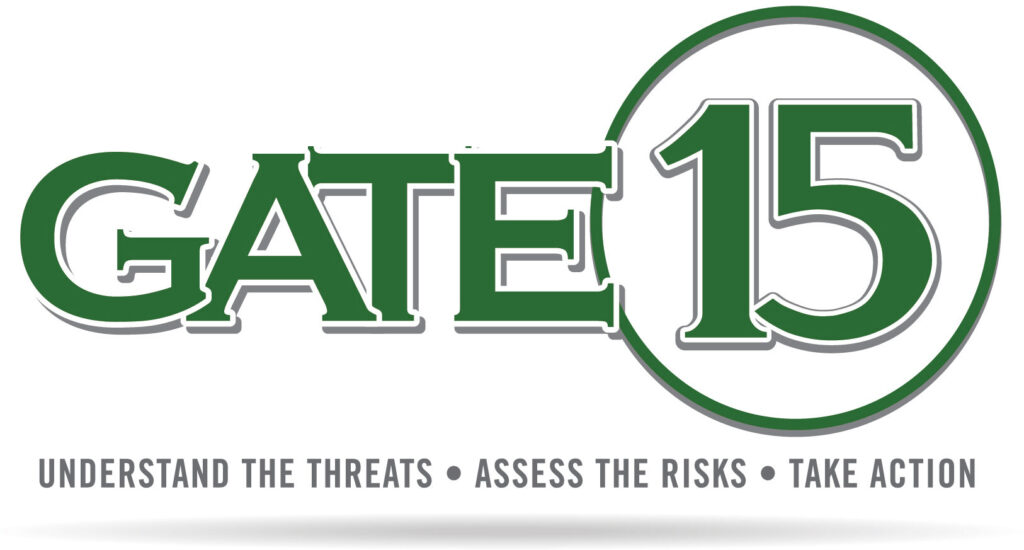ChatGPT Informed, enhanced by Gate 15 (this post includes contributions from Ben Taylor and Tommy Jabbour)
Hospitals are vital institutions that provide critical medical services to patients in need. With the rise of technology and the increasing reliance on digital systems, hospitals have become more vulnerable to cyberattacks as well as blended threats. A blended threat is a natural, accidental, or purposeful physical or cyber danger that has or indicates the potential to have crossover impacts and harm life, information, operations, the environment, and/or property. In this article, we will discuss the growing threat of blended attacks to hospitals and the steps that can be taken to prevent them.
The Consequences of Blended Threats
Blended threats can have devastating consequences for hospitals and the patients they serve. A successful attack can compromise patient data, disrupt the delivery of medical services, and even result in loss of life. In some cases, hackers may use ransomware to hold hospital data and systems hostage, forcing the hospital to pay a ransom to regain access. In other cases, attackers may steal sensitive information, such as medical records, which can then be sold on the black market or used for identity theft. Because network issues can cause delays to time sensitive operations, patient safety is a growing concern as a result of cyberattacks, as detailed in this recent article from SC Media.
The Threat Landscape
Blended threats to hospitals are becoming more frequent and sophisticated. Attackers are using a variety of techniques, including phishing scams, malware infections, and social engineering attacks, to gain access to hospital systems. Additionally, many hospitals have legacy systems that are no longer supported by their vendors, leaving them vulnerable to exploitation. Furthermore, hospitals are often understaffed and under-resourced, making it difficult for them to respond to and recover from cyberattacks. Tateeda Global has published a blog which looks at when and why you need to update your healthcare legacy system software systems, which is recommended reading for any organization struggling to prioritize system updates.
Preventing Blended Threats
To prevent blended threats, hospitals need to implement a multi-layered security approach that includes technical controls, security awareness training, and incident response planning. Technical controls, such as firewalls, intrusion detection systems, and antivirus software, can help to prevent attackers from accessing hospital systems. Additionally, security awareness training can help employees recognize and respond to potential threats, such as phishing scams or malware infections. Finally, incident response planning can help hospitals to quickly and effectively respond to cyberattacks, minimizing the damage and ensuring the continued delivery of medical services. For organizations looking to enhance their cybersecurity preparedness this year, we recommend taking a look at HHS’s blog on Improving the Cybersecurity Posture of Healthcare in 2022.
Conclusion
Blended threats to hospitals are a growing concern, with the potential to cause significant harm to both the hospital and its patients. By implementing a multi-layered security approach and regularly training employees on security best practices, hospitals can help to prevent these attacks and ensure the continuity of medical services. It is critical for hospitals to prioritize their cybersecurity efforts, as the consequences of a successful attack can be devastating.

Relevant Resources:
- Health-ISAC Blended Threats White Paper
- HHS & HPH Sector Coordinating Councils Health Industry Cybersecurity Practices: Managing Threats and Protecting Patients
- CISA Cyber Essentials
- And for more, see our resources pages.
Gate 15 is using ChatGPT to develop simple blog posts addressing some of the issues we are currently thinking about. Gate 15 reviews the content produced by ChatGPT, and beyond checking for accuracy, enhances the post with contextual links and resources.
Post image by sungmin cho from Pixabay
Understand the Threats.
Assess the Risks.
Take Action.
Understand the threats! For day-to-day updates, subscribe to our free daily paper and follow us on Twitter: @Gate_15_Analyst. For human perspective and analysis, subscribe to our weekly and monthly podcasts.
Take action! Our team specializes in intelligence and analysis, preparedness activities to include the development of plans, training, and exercises, and we can help you build the relationships and capabilities you need for effective information sharing operations to support your ability to prevent, protect against, mitigate, respond to, and recover from the threats and hazards that pose the greatest risk to your organization in our complex, all-hazards environment.
